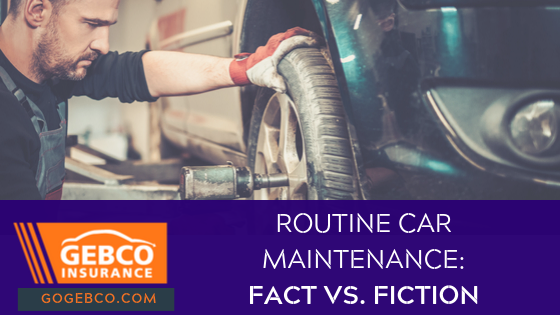
Consumer Reports experts state that today’s modern vehicles “can run for 200,000 miles and more.” It makes sense to want your vehicle last for a long time. You want your vehicle to be worth the investment. Doing routine maintenance helps ensure it is.
But many of us can’t afford the price of these newer cars. That makes routine maintenance even more critical.
So, whether you own or lease a new or older model, regular maintenance is the absolute best way to keeping your car reliable and functioning optimally for a long time.
So, how should I be maintaining my car?
Fiction: All car owners should be getting an oil change every 3,000 miles.
Fact: While you should be checking your oil once a month and before driving farther distances, most modern vehicles do not require oil changes as often. Consumer Reports states that “many automakers recommend changing the engine oil and filter every 7,500 miles or six months, whichever comes first.” A shorter period between oil changes is typically recommended for vehicles with more exposure to severe, colder weather.
Tip: You should always reference the details in your manual to understand how often you should be changing your vehicle’s engine oil.
Fiction: You should be filling up your tires to the recommended amount in the tire’s sidewall.
Fact: The correct way to find out the ideal tire pressure is on a sticker inside the front door of your vehicle. Don’t fill your tires to the maximum levels as shown on the tire sidewall. Overfilling tires can wear the tires out unevenly, leading to further maintenance and a shorter tire-life.
Tip: A tire pressure gauge is a low-cost, easy way to be sure that your tires are at an ideal pressure at all times. Consumer Reports recommends either an inexpensive digital gauge or a pencil-style manual gauge.
Fiction: Wearing the tires down to the minimum tread is the right time to purchase new tires.
Fact: While it’s true that this is the recommended time to replace tires, this would be waiting too long. Winters in Baltimore and D.C. take a toll on tires.
Tip: Follow your manual for tire rotation recommendations. By rotating your vehicle’s tires at the recommended time and schedule, you’ll be getting the best bang for your buck.
Read more about regular car maintenance from Consumer Reports here.
Buying a vehicle is only the first part of the purchase. When in doubt, reference your car’s manual and your trusted mechanic.
The second part of your important investment should be a low-cost car insurance. If you’re looking to insure your vehicle for the first time or are looking for an affordable, low-cost option to stay on track with maintaining your vehicle and finances, get started with a free online quote.


